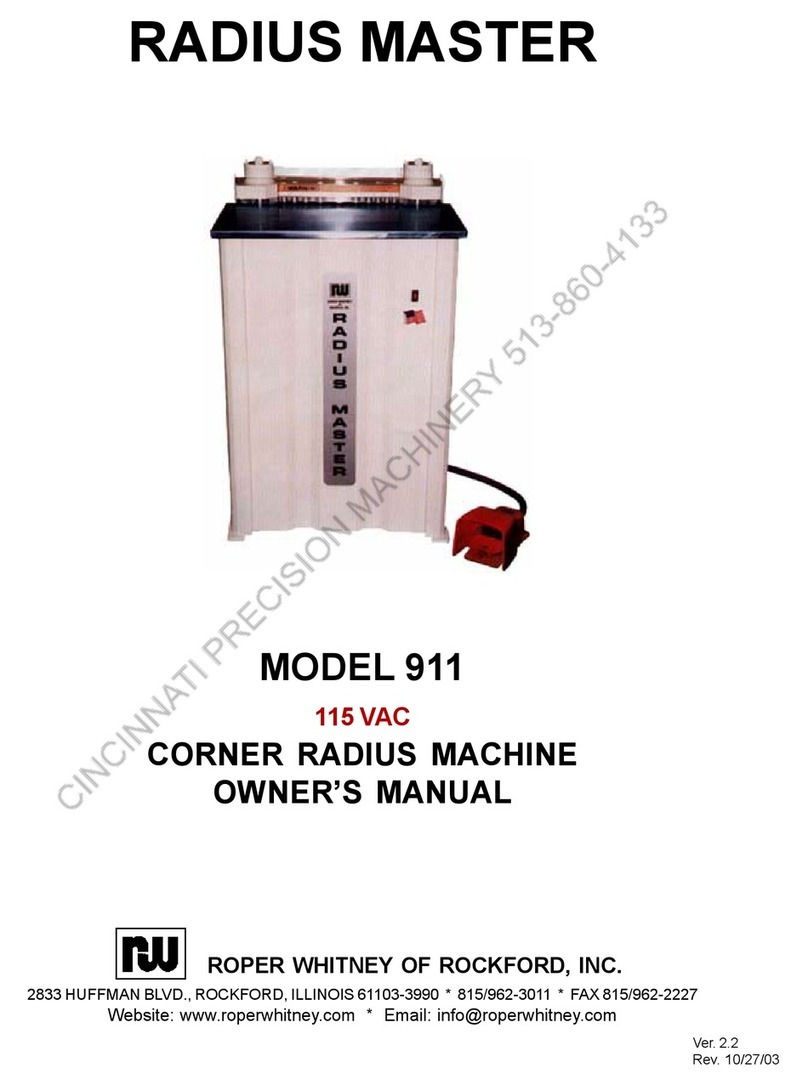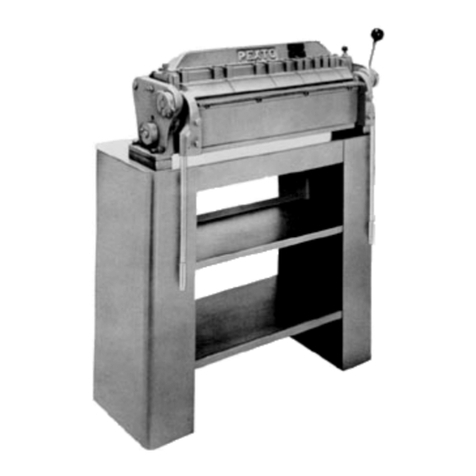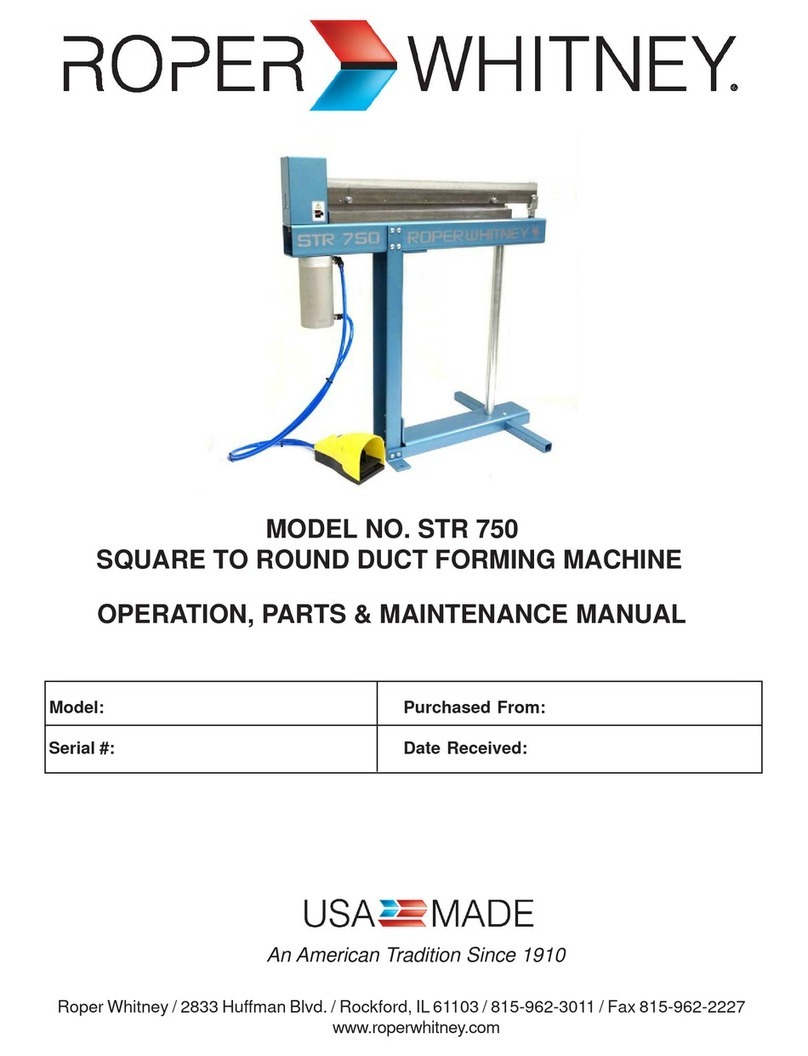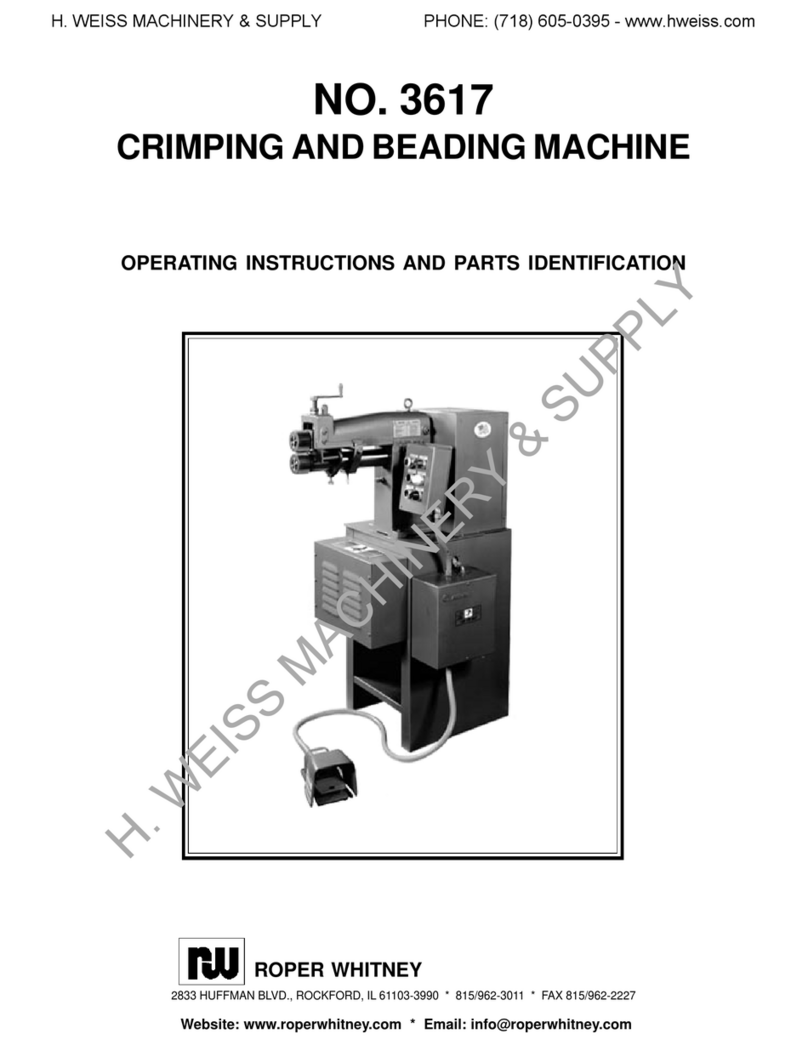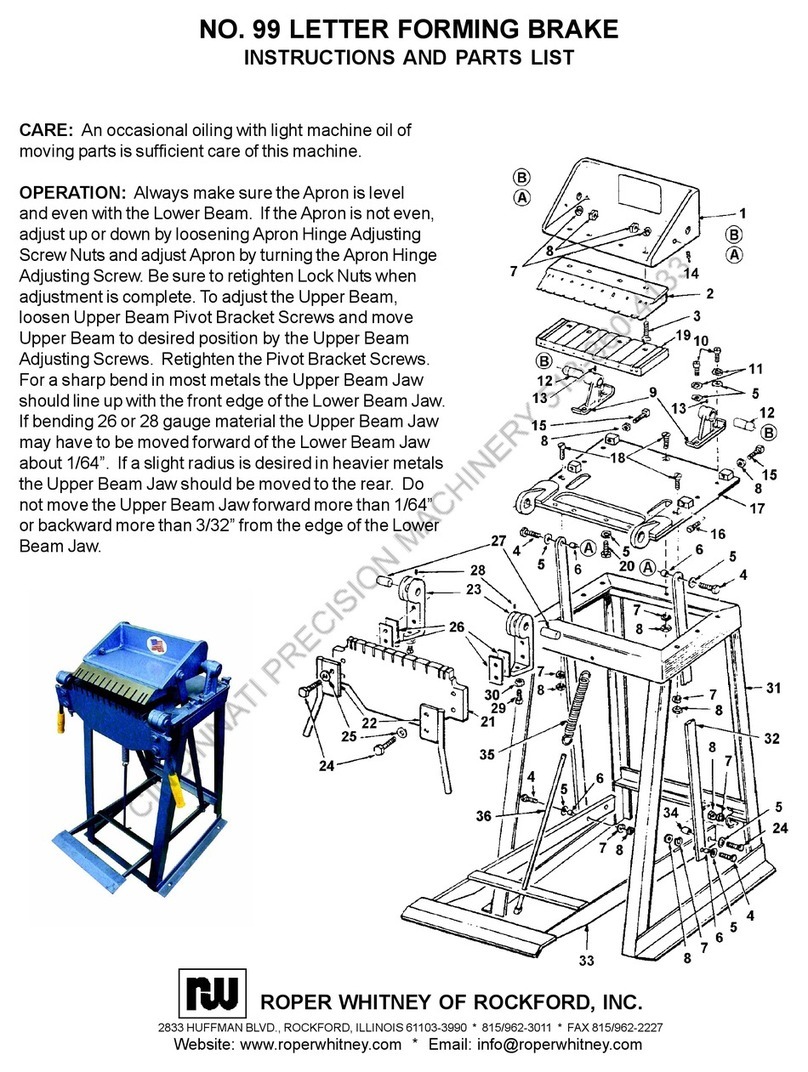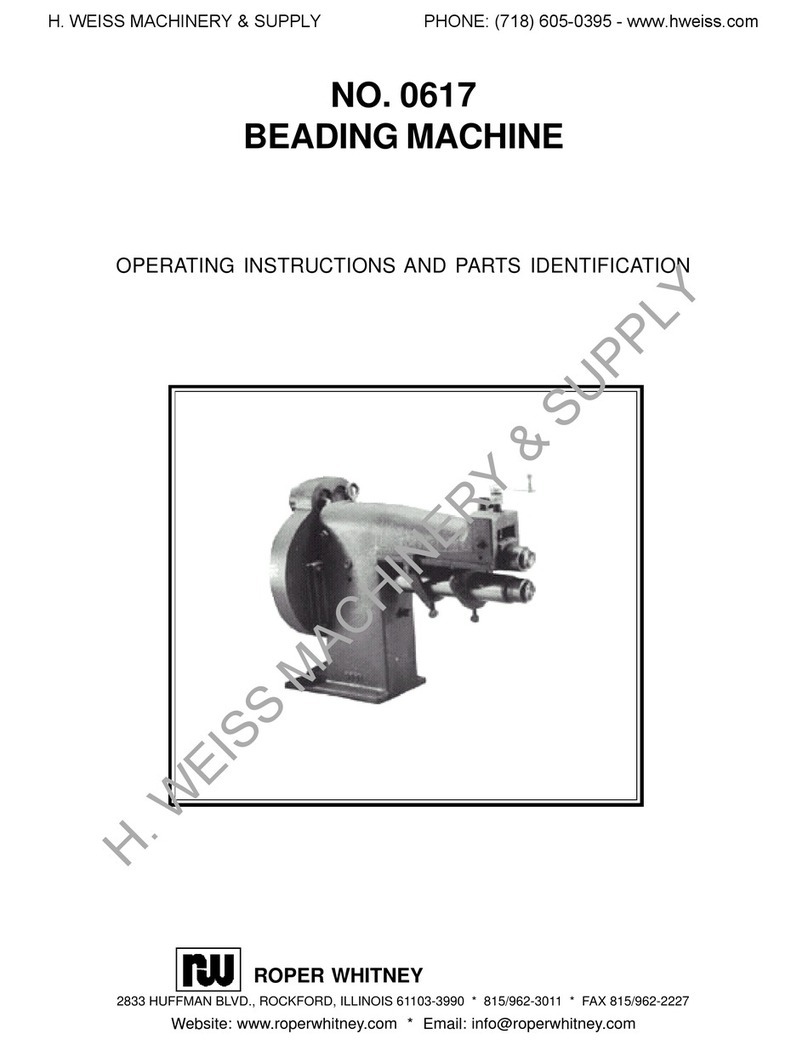
Manual Brake Installation, Operation, and Maintenance Manual
Page iv
LIMITED WARRANTY
All new Roper Whitney tools and machines are warranted, to the original
purchaser for use, to be free of defects in material and workmanship for a period
of one year from purchaser's date of purchase. Roper Whitney, at its option, will
repair, replace, or refund the purchase price of any tool or machine which fails
within the warranty period, and is found upon examination by Roper Whitney, to
be defective in material or workmanship, or both. This warranty does not cover
failures attributable to improper use or maintenance , exceeding rated capacity,
alteration, accident, or normal wear of moving parts. Accessories, controls, and
components not manufactured by Roper Whitney Company are excluded from this
warranty. For services on such parts, refer to the applicable manufacturers'
warranties.
There is no other express warranty to the extent permitted by law. Any and all
implied warranties, including merchantability and fitness for a particular purpose
are excluded; and implied warranties not excluded are limited in duration to one
year from the date of purchase. Incidental and consequential damages are
expressly excluded from the remedies available to purchaser, and the remedies
provided in this warranty shall be exclusive to the extent permitted by law. (Note:
Some states do not allow limitations on how long an implied warranty lasts, or the
exclusion or limitation of incidental or consequential damages; so the foregoing
limitations and exclusions may not apply to you. This warranty gives you specific
legal rights, and you may also have other rights which vary from state to state.)
Purchaser must give written notice to Roper Whitney Company, at the address
shown below, of any warranty claims, within thirty days after failure, and if so
instructed, return to Roper Whitney Company the parts to be replaced or repaired,
with all transportation charges prepaid by purchaser. Replacement parts will be
invoiced to purchaser, with credit issued for parts covered by this warranty, and
freight thereon. Removal and reinstallation of replacement parts shall be at the
purchaser's expense.
Return of the warranty registration card furnished with the product purchased is
necessary to obtain warranty covereage thereon. The card must be fully com-
pleted, signed by the purchaser, and, if applicable, signed by the distributor. Return
the registration card to:
Roper Whitney of Rockford, Inc.
2833 Huffman Boulevard
Rockford, Illinois 61103
COVERAGE
REGISTRATION
WARRANTY
CLAIMS
EXCLUSIONS
